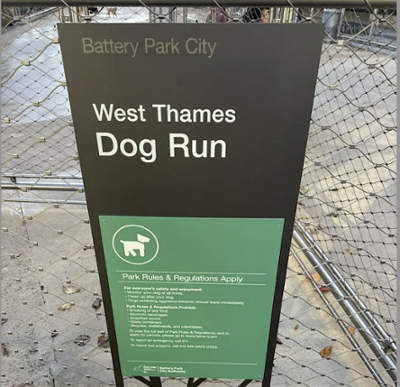

Animals in the design of cities and urban spaces: How to do it
Iberzoo Propet, from 26 to 28 de February 2025 at IFEMA MADRID
It is an undeniable social reality that animals are present in our lives. Our interaction with the animal world is highly beneficial to our health and well-being, both physical and mental, but there are also risks.
Animals of all types live in our towns and cities: wild, feral, production or pets, each with their own idiosyncrasies and needs, but with crossed-impacts on health and multiple interferences with human life. All this fauna includes local species, migratory species, invasive and threatened species and species in danger of extinction, some desirable and beneficial, and others, historically, considered to be infestations.
From my perspective as a veterinarian I see, over and again, that this subject is always forgotten, that it is not taken into consideration during city planning, when building or upgrading housing developments, homes, workplaces, green zones and new climate oases. Neither is it considered in urban well-being or planning. This leads to numerous difficult-to-resolve problems.
When it comes to pets, in Spain, 49% of people live with at least one pet, and of these, eight out of ten consider their animals a member of the family. ANFAAC’s annual report in 2021 talks of more than 30 million pets in Spain, of which there are 9.3 million dogs and around 6 million cats.
However, many of these pets lack the space they need to be able to behave naturally. All too often, this results in injury, distress and stress which changes their behaviour, making them more irritable, aggressive, and more difficult to live with.
Numerous studies show that interacting with pets reduces stress in people, is of great help in cases of loneliness, for bringing up children, it encourages active ageing and social cohesion, and even “reduces the need for medication to treat many health conditions, of which depression, anxiety, chronic pain, diabetes, high blood pressure, are the most common.
Because this is a subject of great importance to half the population and has a significant impact on quality of life, the philosophy of “people who don’t have enough space shouldn’t have pets” no longer holds good; rather, this matter needs to be dealt with greater empathy and with a collaborative professional response.
The situation should be taken into consideration as a factor for the sustainable and healthy design of spaces because it addresses a pressing need to create private and common areas that integrate the presence of pets in social life harmoniously, safely and healthily, particularly dogs and cats, while ensuring animal health and welfare.
Otherwise, this coexistence transforms into a swarm of complicated health risks and disputes between neighbours and citizen safety, which is, unfortunately, the current reality.
On this subject, the design of homes, housing developments, shopping areas, leisure facilities and even offices, hotels and restaurants (which are attempting to become increasingly pet-friendly), as well as common urban spaces, has much to do with tipping the balance in one direction or another.
For example, floors that are too slippery for animals, preventing them from running or playing safely; a lack of adequate play and rest areas, which often obstruct the passage of both people and animals; a lack of elevated resting and refuge spots for cats, essential to prevent multiple stress-related conditions in this species; terraces and balconies that are not designed to prevent animals from falling through gaps or from jumping over railings or fences; and unsafe gardens containing toxic or allergenic plants.
Despite the fact that more health, welfare and sustainability factors have been integrated in recent years, the current situation is that plans and buildings are still being designed without considering the existence of pets in our lives. It is crucial for architectural and interior design projects to be drafted with advice from experts such as veterinary clinics, municipal vets and psychologists specialised in the human-animal relationship.
We cannot expect animals to be “perfect citizens”, not to be a nuisance or make a noise, and not to make a mess if we don't provide them with adequate, sufficient areas where they can behave naturally, run, play and keep the mess to a minimum.
All this is essential for the best coexistence between humans and animals, guaranteeing a minimum level of well-being for animals, allowing them to be calmer, better socially integrated and adapted to urban life. As a result, aggressive behaviour and the nuisance caused by barking would be reduced.
This is no longer just an isolated issue for each pet owner; rather, a more professional and interdisciplinary response is needed in the design of public and private spaces, as well as accessibility policies for pets in different urban areas and buildings, where they have traditionally been unwelcome but whose inclusion is now increasingly in demand by society. It is a necessity, a demand, and a challenge, but also a new market opportunity.
The pet-friendly approach is also starting to be a major tourist attraction, especially for emerging areas, as dog-friendly tourism is of higher quality, more active, and environmentally friendly. There is an increasing demand for tourist accommodation, hotels, restaurants, parks, green routes, beaches, and transport that allows animals, especially dogs.
When we talk about green cities or climate oases, it is no longer viable to think solely about plant species based solely on their appearance and on landscape criteria. We also need to bear in mind that we are building an ecosystem where wild animal species (birds, mammals, insects, etc.) will inevitably nest. Depending on the choice of plant species and the design of the space, these animals can be beneficial for the ecosystem, biodiversity, and health (for example, enjoying the pleasant sound of birdsong), a nuisance (noise, mess, safety issues), or even an infestation due to the proliferation of disease vectors that impact public health.
It is also important to consider that for the ageing population, having a pet is a great help for dealing with loneliness, helps to foster social cohesion and interaction, and is a significant factor in increasing physical activity. While they walk their dogs every day, elderly people interact with neighbours, participate in conversations in the park, and do enough physical exercise to establish a healthy habit. Therefore, pet ownership should not be left out of the criteria to be considered in elderly-friendly cities, which should provide optimal conditions for these habits to be carried out normally and without accessibility barriers.
All these facts should be a turning point for developing a new professional field that addresses a significant existing need. I believe the effort will be worth it.
Source: extract from the article published in NAN Arquitectura by Delia Saleno. Veterinarian, president of the One Health Work Group of the CEOE. Former president CEVE.





